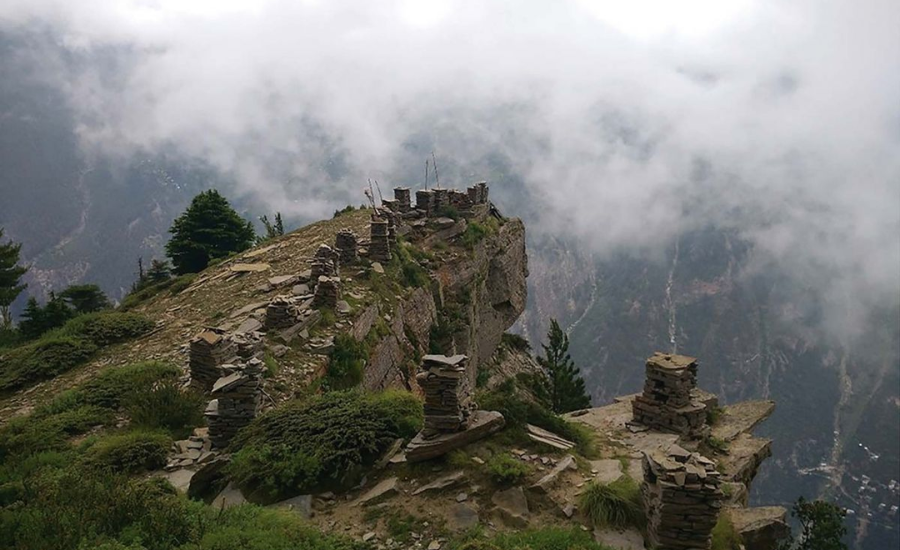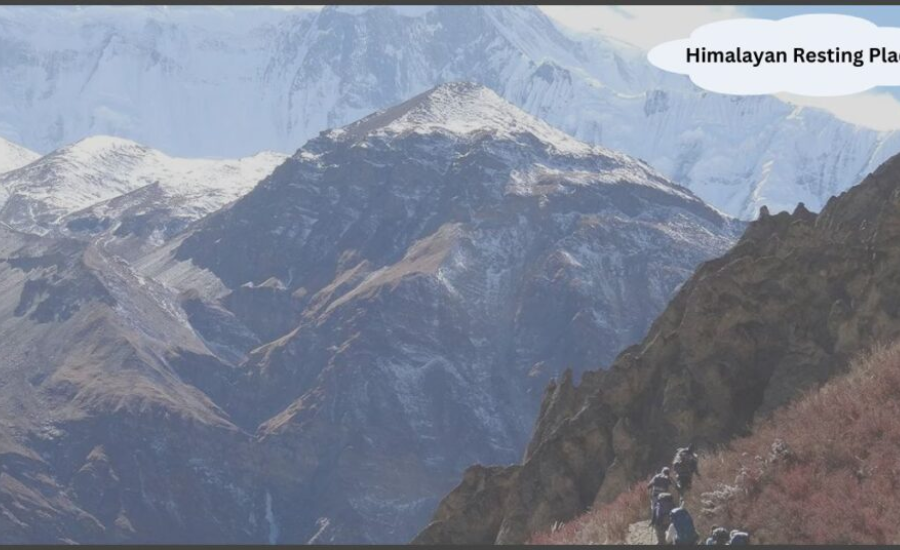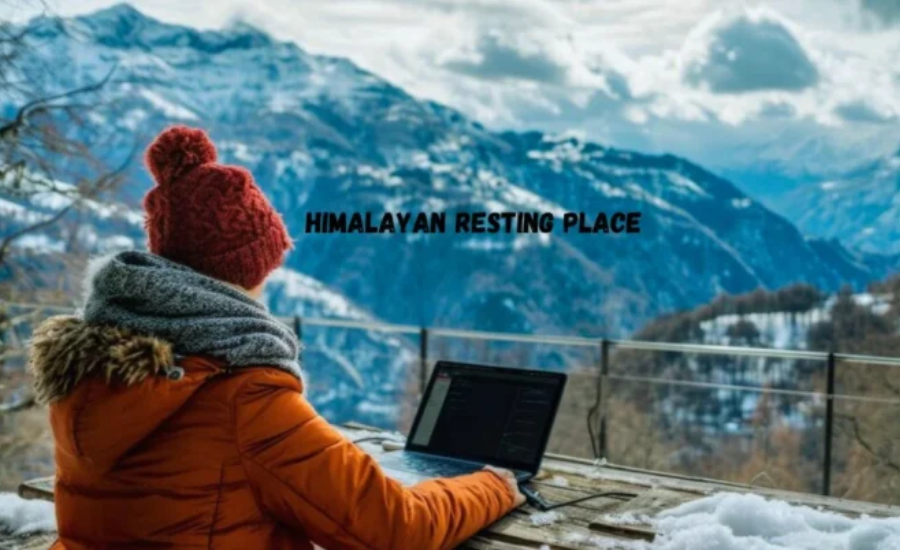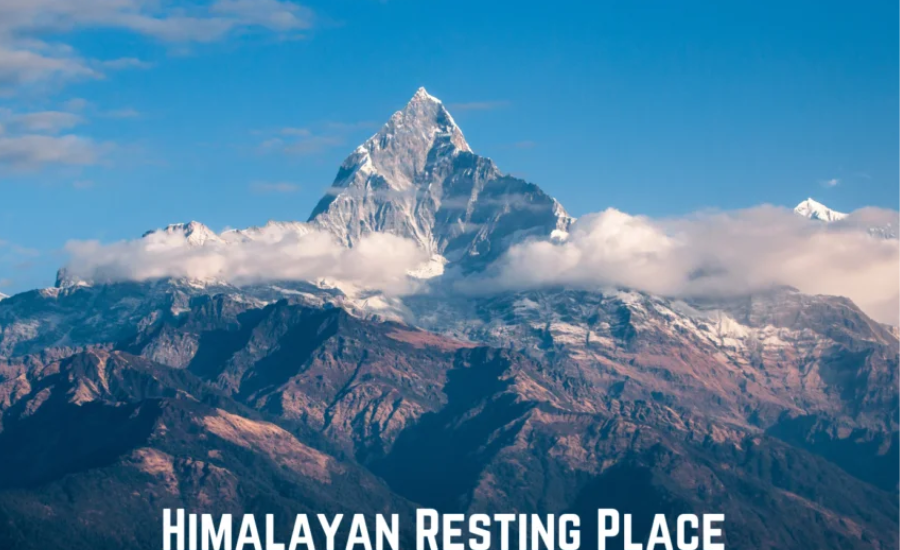The Himalayas, often called the “abode of snow,” stretch majestically across five countries: Bhutan, China, India, Nepal, and Pakistan. These mountains are not just a series of peaks but a complex and diverse landscape that has captivated explorers, pilgrims, and adventurers for centuries. At the heart of this formidable mountain range lies the concept of the Himalayan resting place, a symbolic and physical sanctuary that offers peace, solitude, and a profound connection to nature and spirituality. This article delves into the allure and significance of these resting places, exploring their cultural, spiritual, and ecological importance.
A Majestic Landscape

The Geographical Spread
The Himalayas span five countries, each contributing to the range’s unique geographical and cultural tapestry. These mountains are home to some of the highest peaks in the world, including Mount Everest and K2, and feature a variety of terrains, from snow-capped summits to lush green valleys.
The Natural Beauty
The region’s natural beauty is unparalleled, with its towering peaks, deep gorges, and expansive glaciers. The biodiversity here is rich, featuring rare and endangered species of flora and fauna, making it a vital ecological zone.
Cultural Significance
A Heritage of Pilgrimage
For centuries, the Himalayas have been a destination for pilgrims seeking spiritual solace. Sites like Mount Kailash, the Amarnath Cave, and numerous monasteries and temples are considered sacred. Pilgrims from various religions, including Hinduism, Buddhism, and Jainism, undertake arduous journeys to these sites, reinforcing the mountains’ spiritual significance.
Indigenous Communities
The Himalayas are also home to diverse indigenous communities, each with its unique traditions and ways of life. These communities have a profound connection to their environment, which is reflected in their cultural practices and sustainable living methods.
Spiritual Sanctuary
The Concept of Resting Places
The idea of the Himalayan resting place is both metaphorical and literal. It represents places where individuals can retreat to find peace and solitude, away from the hustle and bustle of everyday life. These resting places are often monasteries, hermitages, or simply secluded spots in nature that offer a tranquil environment for meditation and reflection.
Spiritual Practices
The serenity of the Himalayas provides an ideal setting for various spiritual practices such as meditation, yoga, and prayer. Many spiritual leaders and practitioners come to the Himalayas to deepen their practice, drawn by the mountains’ profound sense of peace and the belief that the high altitudes bring them closer to the divine.
Ecological Importance
Biodiversity Hotspot
The Himalayas are one of the world’s most significant biodiversity hotspots. The region’s varied climate zones support a wide range of ecosystems, from tropical forests to alpine meadows. This biodiversity is crucial for ecological balance and provides essential resources for the local communities.
Conservation Efforts
The ecological significance of the Himalayas has led to numerous conservation efforts aimed at preserving its unique flora and fauna. These efforts are essential for maintaining biodiversity and supporting the livelihoods of the indigenous populations who depend on the land.
Modern Challenges
Climate Change
One of the most pressing challenges facing the Himalayas is climate change. The region’s glaciers are melting at an alarming rate, impacting water resources for millions of people. Climate change also threatens the delicate ecosystems and the traditional ways of life of the indigenous communities.
Tourism Impact
While tourism brings economic benefits, it also poses significant risks to the Himalayan environment. Uncontrolled tourism can lead to environmental degradation, including waste pollution and habitat destruction. Sustainable tourism practices are crucial to preserving the region’s natural and cultural heritage.
The Journey to the Himalayan Resting Place

Physical Challenges
Embarking on a journey to the Himalayan resting places is no ordinary feat. Traversing rugged terrains, crossing high mountain passes, and enduring unpredictable weather conditions are part of the arduous trek. The journey itself is a testament to human endurance and resilience, symbolizing the challenges one must overcome to attain a state of inner peace and enlightenment. Each step taken on the rocky paths, every breath drawn in the thin air, brings travelers closer to not just their physical destination but also a deeper understanding of their strength and determination.
Spiritual and Emotional Transformation
The physical journey through the Himalayas is paralleled by a profound inner transformation. As travelers navigate the daunting mountain trails, they often confront their limitations and fears. The majesty and isolation of the Himalayas provide an ideal backdrop for introspection and self-discovery. The sense of achievement upon reaching these serene resting places is often accompanied by a profound spiritual awakening and renewal. The Himalayas, with their awe-inspiring beauty and tranquil ambiance, facilitate a journey within, allowing travelers to reconnect with their innermost selves.
Ecological Impact
The influx of visitors to the Himalayan resting places brings significant economic benefits to local communities. However, it also poses a considerable threat to the fragile Himalayan ecosystem. The delicate balance of this unique environment can easily be disrupted by the pressures of tourism. Sustainable tourism practices are crucial to preserving the natural beauty and cultural heritage of these sacred sites. Efforts are underway to ensure that tourism development is balanced with conservation initiatives, safeguarding these pristine sanctuaries for future generations to enjoy.
The Future of Himalayan Resting Place

Balancing Tourism and Conservation
The growing popularity of the Himalayas as a travel destination necessitates a careful balance between tourism and conservation. Initiatives such as eco-friendly accommodations, comprehensive waste management programs, and community-based tourism projects aim to minimize the environmental impact while promoting sustainable development. By fostering responsible tourism, these efforts ensure that the breathtaking beauty and ecological integrity of the Himalayas are preserved.
Cultural Preservation
Preserving the cultural heritage of Himalayan communities is of paramount importance as tourism continues to grow. There is an inherent risk of cultural erosion if local traditions, crafts, and languages are not supported and maintained. Efforts to celebrate and promote the unique cultural identities of these regions are essential. Ensuring that the Himalayan resting places remain not just natural sanctuaries but also cultural and spiritual havens requires a commitment to protecting and nurturing the rich cultural tapestry of the Himalayas.
The Role of Technology
Advancements in technology are making remote Himalayan resting places more accessible than ever before. Improved infrastructure, better communication networks, and technological innovations are enhancing the visitor experience while providing opportunities for local communities to benefit from tourism. However, it is crucial to ensure that technological developments do not compromise the natural and cultural integrity of these sacred sites. Striking a balance between accessibility and preservation is key to maintaining the sanctity and allure of the Himalayan resting places.
In summary, the journey to the Himalayan resting places is a multifaceted experience encompassing physical challenge, spiritual growth, and ecological awareness. As these sacred sites continue to attract visitors from around the world, it is essential to promote sustainable and responsible tourism practices. By doing so, we can ensure that the majestic beauty and profound tranquility of the Himalayas are preserved for future generations to explore and cherish.
FAQs about the Himalayan Resting Place
1. What are the Himalayan resting place?
Himalayan resting places refer to both metaphorical and physical sanctuaries within the Himalayan mountain range. These places offer peace, solitude, and a profound connection to nature and spirituality. They include monasteries, hermitages, and secluded natural spots that are ideal for meditation and reflection.
2. Why are the Himalayas considered spiritually significant?
The Himalayas are considered spiritually significant because they are home to many sacred sites and pilgrimage destinations across various religions, including Hinduism, Buddhism, and Jainism. The mountains’ isolation and natural beauty create an ideal environment for spiritual practices such as meditation, yoga, and prayer.
3. What are some famous pilgrimage sites in the Himalayas?
Some famous pilgrimage sites in the Himalayas include Mount Kailash, the Amarnath Cave, and numerous monasteries and temples like Hemis Monastery, Tawang Monastery, and Badrinath Temple.
4. How can tourists minimize their environmental impact when visiting the Himalayas?
Tourists can minimize their environmental impact by practicing sustainable tourism. This includes staying in eco-friendly accommodations, following waste management practices, respecting local wildlife, and supporting community-based tourism projects that promote conservation.
5. What challenges do the Himalayas face due to climate change?
The Himalayas face significant challenges due to climate change, including the melting of glaciers, which impacts water resources for millions of people. Climate change also threatens the delicate ecosystems and traditional ways of life of indigenous communities.
6. How do local communities in the Himalayas benefit from tourism?
Local communities benefit from tourism through economic opportunities, such as jobs in hospitality and guiding services, as well as the sale of local crafts and products. Sustainable tourism initiatives also help preserve cultural heritage and promote community development.
7. What role does technology play in the accessibility of Himalayan resting places?
Technology improves accessibility to remote Himalayan resting places through better infrastructure and communication networks. However, it is essential to balance technological advancements with the preservation of the natural and cultural integrity of these sacred sites.
Conclusion
The Himalayan resting places, nestled in the awe-inspiring landscapes of Bhutan, China, India, Nepal, and Pakistan, are more than just scenic retreats. They are sanctuaries of peace, spirituality, and profound natural beauty, offering a transformative journey for all who visit. These resting places play a vital role in preserving the rich cultural heritage and ecological diversity of the region.
As the popularity of these sacred sites continues to grow, it is crucial to adopt sustainable and responsible tourism practices to protect their unique environments and cultural significance. By fostering a balance between tourism and conservation, we can ensure that the majestic beauty and tranquility of the Himalayas remain intact for future generations to explore, cherish, and find inspiration.
Embracing the challenges and rewards of reaching these resting places, travelers can experience both physical endurance and spiritual awakening, making the journey to the Himalayas a truly holistic and enriching experience.
Stay in touch for more updates and alerts: Webcord Virus!



